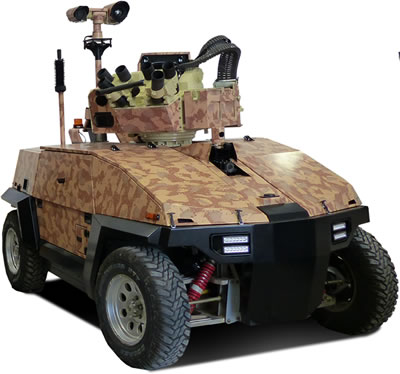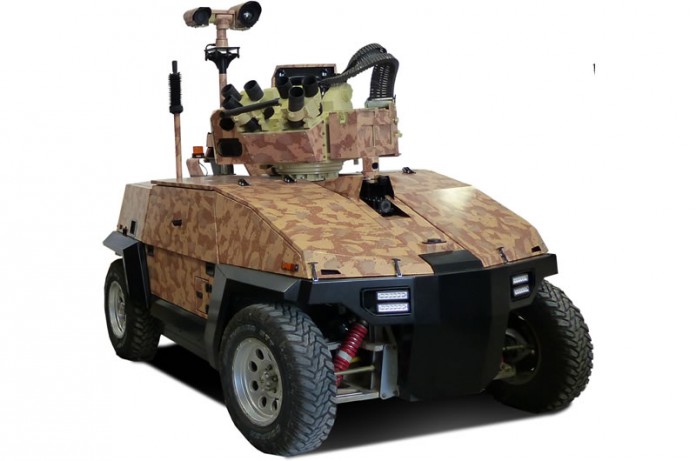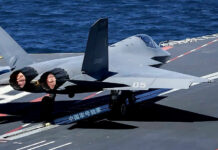
The Israeli ground robotics expert G-NIUS is unveiling its latest unmanned ground vehicle (UGV) at the Eurosatory 2014 exhibition in Paris. The new Hybrid Multipurpose Vehicle (HMV) is optimized for surveillance and intelligence collection missions, homeland security missions and special operations. The HMV will be available in two variants – an all electric or hybrid electric. Both will use an electric drive, featuring high level of manoeuvrability with low acoustic signature, improving survivability and stealthiness. The hybrid variant will also include an integral diesel motor, allowing the vehicle to travel long distances while charging the vehicles’ battery.
The platform architecture enabled G-NIUS designers to focus on the vehicle as a robotic platform, rather than adapt a manned vehicle into a robot, having to deal with redundant elements such as cabin, drivetrain etc. The HMV utilises a low-profile electric vehicle, offering high off-road mobility and low profile. The various sensors are embedded into the vehicle’s envelope, while robotic controls are directly interfacing to the automotive system eliminating typical the applique kit used for the ‘robotization’ of existing vehicles.
Both propulsion options enable the vehicle to carry loads of up to 1.2 tons. The system on display carries a stabilized weapon station from Elbit Systems
“The solutions we are introducing here are offering capabilities based on operational experience accumulated in more than seven years, equivalent to 60,000 man-hours” G-NIUS CEO, Yoav Hirsh commented.
While G-Nius’ HMV is positioned to meet specific applications, bigger prospects are seen in the conversion of part of the military vehicle fleet into optionally robotic vehicles, a trend that could become huge potential market for robotic pioneering company like G-NIUS. This opportunity has guided the company in the development of its robotic control suite, that has been implemented in the HMV and the latest version of the robotic border security vehicle. The Core Unit of this robotic suite is packed into a compact module, that can be installed in any vehicle, converting a manned controlled platform into an unmanned one. The kit allows any ground transportation platform to become an unmanned vehicle – protecting forces while savings in manpower.
Unmanned systems that re-utilize otherwise obsolete platforms, would be more affordable, require significantly less manpower to operate and support while performing at least as reliably as manned platforms

The system is designed for easy installation, withstand harsh operating conditions and extreme temperature range, enabling operators to convert part of their vehicle fleets to assume unmanned missions.
“The Hybrid Multipurpose Vehicle and the Robotic Suite introduce force multipliers to any UGV platform; we are witnessing interest in these solutions by various organizations around the world”. Hirsh added.
Robotic vehicles help save soldiers lives by minimizing exposure of manned operators to mines, IEDs and enemy fire. With safer driving, they would also help avoid non-combat accidents. On such missions, obsolete wheeled and tracked vehicles such as the HMMWV and M-113 can be converted into unmanned, robotic platforms. These robotized vehicles would assume specific missions that would otherwise require new vehicles, through-life support and significant manpower for operations and sustainment. According to expert assessment, unmanned systems that re-utilize otherwise obsolete platforms, would be more affordable, require significantly less manpower to operate and support while performing at least as reliably as manned platforms.
The robotic control core suite has already been integrated in the new border patrol unit, utilizing the Ford F350 (seen in the video below), which will soon replace the Guardium Mk I and II operating with the IDF border patrol missions around the Gaza border. Recently the Guardium was sent to patrol the Lebanese border as well.




















